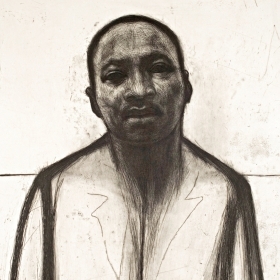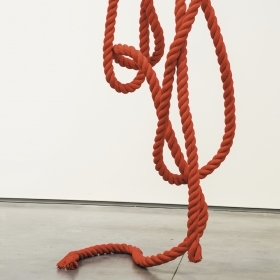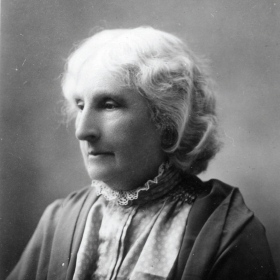The Brillo Box, like this one from the permanent collection of the Davis Museum, became a sensation in 1964 as part of the first exhibition of 3-D objects by Andy Warhol (1928–87) at the Stable Gallery in New York.

Brillo Box, Andy Warhol, Synthetic polymer paint and screenprint ink on wood, 17 in. x 17 in. x 14 in.1964, Museum purchase and partial gift of The Andy Warhol Foundation for the Visual Arts, Inc., 1993.25
The Brillo Box, like this one from the permanent collection of the Davis Museum, became a sensation in 1964 as part of the first exhibition of 3-D objects by Andy Warhol (1928–87) at the Stable Gallery in New York. The show became a hot ticket, despite the drubbing it received from critics.
One of the gallery-goers at the opening happened to be Jim Harvey, the designer of the Brillo soap-pad box. Harvey (1929–65) was a painter who made his living as a commercial artist. According to a friend, Harvey laughed off the incongruity of seeing his design in a fine-art gallery; he even chatted with Warhol, who apparently had no idea who created the Brillo packaging.
Warhol had the nerve to serve up replicas of consumer product boxes right under the nose of the art establishment. He understood that art in the 1960s was moving away from the moody, angst-ridden paintings of the Abstract Expressionists, such as de Kooning and Pollock, and toward Pop Art, which took its ideas and forms from popular culture and mass production.
He didn’t intend for the boxes to be exact copies of the store versions. “If you look closely you’ll see how much hand painting there is, how many clever ‘mistakes,’” says Patricia Berman, the Theodora L. and Stanley H. Feldberg Professor of Art.
Warhol showed that familiar, even banal, items could be elevated by placing them in a high-art context. “He was playing with our sense of value and importance,” says Eve Straussman-Pflanzer, who curated the Davis exhibition Warhol @ Wellesley last spring. The show drew from 162 objects by Warhol in the collection, including screen prints, printed boxes, and black-and-white and Polaroid photographs. Visitors to the Davis can see the Brillo box, a Campbell’s Tomato Juice box, and several Polaroids on permanent display.
The artist wasn’t just tweaking his critics. He also believed in the virtue of mass-produced consumer goods: As the child of struggling immigrants, he found reassurance in the ubiquity of consumer products. Even after he became famous, he ate Campbell’s soup every day for lunch.
People ask, as they did in 1964, “What makes it art?” Berman concedes that the boxes are a hard sell for some people. But she admires how they “transform your vision of the world, so that you see potential Warhols everywhere,” she says. “Without knowing it, you’re beginning to make judgments about where the boundaries of art reside. The box provides no answers.”


